Jacobin Is Fueling the Lies About Syria
The greater the bloodshed, the more harm the misinformation put out by the magazine/website will wind up doing. The flag of Syria. (Global Panorama / CC BY-SA 2.0)
The flag of Syria. (Global Panorama / CC BY-SA 2.0)
Syria has generated more lies than any United States action since the 2003 invasion of Iraq. That’s why Jacobin Magazine, the self-proclaimed “leading voice of the American left,” is so important. Readers need it to help cut through the dense fog of mendacity billowing forth out of Washington.
Correction: That’s why Jacobin should be important. In fact, the magazine/website has echoed U.S. propaganda on Syria and in some cases even exceeded it.
Jacobin has attacked the Assad regime for dwelling excessively on rebel atrocities against Christians, Shiites and other minorities, and has criticized Washington for failing to provide jihadis with advanced weaponry such as shoulder-fired anti-aircraft missiles known as “manpads.” It has criticized the United States for “bomb[ing] Al Qaeda and ISIS [and] not the regime,” accused the U.S. left of being “soft on Assad” for opposing regime change, and argued that Saudi-backed holy warriors are no threat to democracy.
Jacobin has even blamed the Baathist regime in Damascus for attempting to counter an illegal U.S. incursion. In support of Donald Trump’s claim that Syrian President Bashar Assad dropped poison gas on the northern Syrian town of Khan Sheikhoun last April, Stephen R. Shalom, a political science professor at William Patterson College in New Jersey, argued that Assad is capable of anything and that his decision to bomb perilously close to U.S. forces proves it. As he stated in Jacobin last July:
Why did his forces and allies advance on an area protected by the United States? Why did a Syrian warplane drop bombs near American-backed forces and their advisers? If it seems crazy for Assad to use sarin when he’s already winning the war, doesn’t it seem even more provocative to drop bombs near U.S.-backed forces? Why would Assad behave this way?
Why? That U.S. forces had entered Syria in violation of international law apparently has nothing to do with it. Neither does the fact that Assad was fending off a foreign invasion. Rather than opposing imperial wars of aggression, Jacobin opposes Third World leaders who resist them.
All of which is the last thing one would expect of a socialist outlet, especially one whose influence in recent years has been growing by leaps and bounds. Jacobin is the semi-official organ of Democratic Socialists of America, which, with 32,000 dues-paying members, is now the biggest mass socialist organization in America in 70 or 80 years. Its website attracts as many as 1.2 million visits or more per month, its quarterly magazine has a press run of 36,000, while Bhaskar Sunkara, Jacobin’s founder, editor and publisher, has been profiled in The New York Times and interviewed by the New Left Review.
The magazine has turned into a miniature powerhouse, in other words, which is why its Mideast flip-flops are impossible to ignore. The Syrian conflict, meanwhile, has turned into nothing less than a catastrophe, with hundreds of thousands killed, millions displaced and yet more destruction threatened by the Jan. 21 Turkish invasion. The greater the bloodshed, the more harm the misinformation put out by Jacobin will wind up doing.
There’s no doubt that the Syrian conflict is complicated and that the Damascus regime has more than its fair share of sins to answer for. But what readers should keep uppermost in mind is that Baathist crimes pale in comparison to those of the U.S., which since the 1970s has invested trillions in militarizing the Persian Gulf and arming the ultra-reactionary petro-monarchies that are now tearing the region apart. The U.S. has provided Saudi Arabia with crucial assistance in its war on Yemen, it has cheered on the Saudi blockade of Qatar, and it has stood by while the Saudis and United Arab Emirates send in troops to crush democratic protests in neighboring Bahrain. In Syria, Washington has worked hand in glove with Riyadh to organize and finance a Wahhabist holy war that has reduced a once thriving country to ruin.
One might assume that socialists would oppose such aggression, but Jacobin has made excuses for it and in some cases complained that it hasn’t gone far enough.
Jacobin’s coverage wasn’t always this wretched. Once upon a time, it was actually quite good. In December 2012, for example, roughly a year and a half into the Syrian conflict, a Jacobin contributing editor named Belén Fernández published a short but biting attack on “ex-members of the anti-imperialist left” who insist that “the conflict now devastating Syria pits the regime of Bashar al-Assad against ‘the Syrian people.’ ” Not so, she said: “The presence of [Osama] bin Laden’s progeny among the anti-Assad militants should … expose the recklessness of cheerleading the FSA [the U.S.-backed Free Syrian Army] as the embodiment of the Syrian people, especially if Syria ends up serving as another training ground for jihadist warfare—something that will naturally affect other people too.”
Two and a half years later, Jacobin published a hard-hitting piece by author and journalist David Mizner about a recently declassified report by the Defense Intelligence Agency, the Pentagon’s answer to the CIA, which, three years earlier, had already concluded that “the Salafist[s], the Muslim Brotherhood, and AQI [al-Qaida in Iraq] are the major forces driving the insurgency.” A couple of months after Mizner’s article, Jacobin ran a sharp 7,600-word analysis by Patrick Higgins, an Arab-history grad student at the University of Houston, who likewise dismissed “the popular narrative” of “the People versus the Dictator” as seriously misleading.
“Syria is gripped by war,” Higgins wrote, “and it is clear that large sectors of the lower classes, particularly those among the country’s ethnic and religious minorities, are still with the government.” Although the U.S. insisted on distinguishing between “moderate” rebels and mass murderers like Islamic State or al-Qaida, he pointed out that the various factions more often collaborated. When a U.S.-backed force known as Ahrar al-Sham “delegated responsibilities for governance of Druze villages to Jabhat al-Nusra,” the local al-Qaida affiliate, for instance, Al-Nusra took the opportunity “to massacre at least twenty Druze.” Instead of opposing such atrocities, U.S.-backed “moderates” enabled them to go forward.
This was the sort of hard-hitting journalism one would expect of a left-wing publication. But then Jacobin began veering off in a different direction. Three months after allowing Higgins to have his say, it published an article by Adam Hanieh, a lecturer at London’s School of Oriental and African Studies (SOAS), stating the opposite. “[T]here is little convincing evidence that ISIS is directly funded, or armed, by Saudi Arabia or any other Gulf state,” he wrote, and rather than rebels “stok[ing] sectarian discord,” it was actually the Assad government that was fostering hatred in order to “paint the uprising in an Islamist light.” Where Higgins argued that the anti-Assad uprising had been violent from the outset—which is indeed the case—Hanieh said that Syrian protesters only turned to violence after being “faced with the barrel bombs, tanks, and indiscriminate aerial attacks of Assad’s military.”
Two weeks later, Jacobin ran an interview with Gilbert Achcar, another SOAS faculty member, who pushed such ideas even harder. In April 2011, Achcar had raised left-wing eyebrows by supporting the NATO assault on Libya and calling on the alliance to deliver arms to the insurgents, who would later kill Moammar Gadhafi. Now, he was no less vehement in demanding the overthrow of the Syrian government. Like Hanieh, he accused the Baathists of fostering the growth of Islamic State and al-Qaida and declared that the Syrian president was not trying to placate opponents when he released jihadist prisoners early on in the Arab Spring but was instead playing “a purely Machiavellian trick … in order to accomplish the self-fulfilling prophecy that it propagated from day one in claiming that the uprising was but a jihadist conspiracy.”
Rather than the Saudis helping jihadis to topple Assad, it seems that Assad was helping jihadis to discredit the revolution. If Assad was a prime cause of the terrorism, then removing him would cause the scourge to go away.
But the United States didn’t want to remove Assad, Achcar went on. To the contrary, it sought to prop him up: “Washington’s support to the opposition is more the stuff of jokes than anything serious. Whereas Moscow and Tehran are providing the Syrian regime with full-spectrum support, including a heavy involvement of proxy fighters on the part of Iran.”
Beginning early last year, Jacobin stepped up the barrage even more. In January, it published an interview with Yasser Munif, a professor at Boston’s Emerson College, who accused Assad of “sectarianization” and “militarization” and said that a distinction should be made between extremists like Islamic State and al-Qaida and moderate Islamists like Jaysh al-Islam and Ahrar al-Sham that “have made it clear in several statements that they support a national democratic transition and that people will be able to choose their own representatives.”
A week later, it published an article by Joseph Daher, a Swiss-Syrian activist who argued that while rebel groups like Ahrar al-Sham were Salafist, they were “not jihadists.” Three weeks after that, it ran an interview with Ramah Kudaimi, a member of the fiercely anti-Assad Syrian Solidarity Collective, who criticized American leftists for opposing regime change and thereby deflecting attention from “all the actions the United States has pursued to preserve the regime.” In April, it ran a brief item by Bashir Abu-Manneh, a Jacobin contributing editor, criticizing the Trump administration for “block[ing] Syrian opposition access to anti-aircraft weaponry,” while in July it ran Shalom’s 4,000-word attack on famed investigative reporter Seymour Hersh for daring to question the Trump administration’s claim that Assad had used poison gas against innocent civilians in Khan Sheikhoun.
What was going on?
If Americans have a hard time figuring out what’s happening in Syria, it’s because the war itself is complicated and because the world in general is a messier place as the left fades to near zero and vicious conflicts erupt among forces that, at first glance, seem right wing. Where Syria once portrayed itself as a bastion of anti-imperialism, “the Hanoi of the Middle East,” the Baathist regime in subsequent decades degenerated into little more than a family dictatorship headed by the wily Hafez al-Assad, president from 1971 until his death in June 2000. When Bashar, a London-trained ophthalmologist, succeeded in July 2000, he was little more than a Syrian Michael Corleone taking over the family business from his father Vito.
Still, Bashar was cultured, outward-looking and an apparent modernizer. As even Robin Yassin-Kassab and Leila Al-Shami concede in their 2016 anti-Assad study “Burning Country: Syrians in Revolution and War,” “the man was genuinely popular,” even after the eruption of violence in March 2011.
Syria, at the same time, is a torn and complicated society difficult to hold together under the best of circumstances. While Tunisia, Libya and Egypt are 90 percent Sunni Muslim or more, Syria is only about 60 percent Sunni Arab, with the rest of the population made up of Kurds and Turkmens plus religious minorities such as Alawites (members of an esoteric form of Shiism), more mainstream Shiites, Christians, Druze and even a small number of Jews, remnants of what was once a large and thriving community.
Baathist reforms have contributed to growing polarization. As a result, the regime found itself locked in a two-decade war with the Muslim Brotherhood, the Sunni fundamentalist party known for its motto “Allah is our goal, the prophet is our leader, the Quran is our constitution, jihad is our way, and death for Allah is our most exalted wish.”
Furious at the government’s efforts to demote the traditional Sunni elite, the brotherhood rose up in 1964 and again in 1976 when it launched a nationwide assassination campaign. According to Newsweek, it killed “hundreds of Alawite members of Assad’s ruling Baath party, along with their relatives, Assad’s personal doctor and a number of Soviet advisers,” Richard Dreyfus reported in “Devil’s Game: How the United States Helped Unleash Fundamentalist Islam.”
In 1979, Islamic terrorists massacred 83 Alawite cadets at a military academy in Aleppo. In early 1982, the Muslim Brotherhood launched a general uprising in the city of Hama, long a conservative Sunni stronghold, that began with the killing of some 70 leading Baathists. Estimates of the death toll during the three weeks it took to suppress the rebellion range from 3,000 to 30,000, Nina Wiedl reported in “The Hama Massacre – reasons, supporters of the rebellion, consequences.”
Since then, the Assad regime had succeeded in imposing a rough peace on the warring factions, albeit at the cost of deepening repression. But instead of bringing Syrians together, the Arab Spring caused old conflicts to burst back into flame. Protesters were almost entirely Sunni, while Christian, Alawites and Druze all held aloof. “You could follow the sectarian patterns across the map,” observed Fabrice Balanche, a French political geographer who has spent years studying the Syrian political scene firsthand. “In mixed Alawite-Sunni areas, the protests only took place in the Sunni areas. In Latakia, Baniyas, and Homs, the demonstrators clashed with Alawite counterdemonstrators. … In the Dara’a Province, the population is almost exclusively Sunni and the demonstrations naturally spread—but they stopped right at the border of the Druse-populated Sweida Province, which did not sympathize with them at all.”
Rather than democracy, the Arab Spring thus ushered in a massive wave of sectarian conflict. Syria was hardly unique in this regard. In Egypt, where Arab Spring protests soon came under the control of the Muslim Brotherhood, attacks on the country’s 10 percent Christian minority multiplied out of control. In Yemen, the growing prominence of the Al-Islah party, as the local Muslim Brotherhood is known, led to violence as well, not with Christians who are a negligible presence but with Shiites, who comprise some 44 percent of the population and were up in arms—literally—over growing Sunni dominance.
But the atmosphere in Syria was even worse. An American living in Damascus wrote that he was taken aback by the animosity he encountered among his Syrian friends. “They must destroy the entire city and should kill everyone demonstrating,” an Alawite hospital worker said of Dera’a, the town near the southern Jordanian border where the Arab Spring protests began. When he told another friend, a Christian, about killings perpetrated by pro-government forces, her only reply was: “Good.” The protesters were nothing but Salafists, as far as she was concerned, and Assad, for all his faults, was the only one holding back the barbarian tide.
As the old Muslim Brotherhood chant—“Christians to Beirut, Alawites to the coffin”—spread, secularists and members of the religious minorities rallied to the Baathist government all the more. Conceivably, Arab Spring protesters could have responded by doing their utmost to combat Sunni chauvinism and win over Christians, Alawites and others. But they didn’t, and the country hurtled toward civil war.
This is the tragic reality that Jacobin chooses to ignore as it promotes a narrative it had previously described as “a cartoon.” Adam Hanieh’s assertion in December 2015 that “there is little convincing evidence” of Saudi aid flowing to Islamic State was bizarre considering that Gen. Martin Dempsey, then chairman of the Joint Chiefs of Staff, had testified at a Senate hearing more than a year earlier that “major Arab allies” were funding Islamic State while Joe Biden told an audience the same thing at Harvard’s Kennedy School. “The Saudis, the Emiratis, etc., … were so determined to take down Assad and essentially have a proxy Sunni-Shia war,” he said, “… [that] they poured hundreds of millions of dollars and tens of thousands of tons of military weapons into anyone who would fight against Assad, except the people who were being supplied were Al Nusra and al-Qaida.”
“So now what’s happening?” Biden went on. “All of a sudden everybody is awakened because this outfit called ISIL, which was al-Qaida in Iraq, which, when they were essentially thrown out of Iraq, found open space and territory in … eastern Syria, worked with Al Nusra, who we declared a terrorist group early on—and we could not convince our colleagues to stop supplying them.” (Quote starts at 53:30.)
We could not convince our colleagues to stop supplying them. If a confession by a U.S. vice president is not enough to convince Jacobin that Sunni oil monarchies were funding Islamic State and al-Qaida, then what is? The claim by Hanieh, Achcar and Munif that Assad fostered the spread of Sunni fundamentalism is equally unfounded. Why would Assad encourage his fiercest opponents? The charge that he sought to “Islamize” the opposition by springing large numbers of jihadis from jail is especially cynical since what oppositionists complained about at the time was not that he was releasing too many prisoners but that he was releasing too few. As an activist named Abdel Razak Eid told Al-Jazeera: “This measure is insufficient. We demanded this amnesty several years ago, but it’s late in coming.” Added another activist, a lawyer named Khalil Maatouk: “This decision won’t do anything to alleviate the pressure from the street. The amnesty should release all political prisoners. That would mean good intentions and indicate something new.”
The charge that the regime consciously sought to pit Sunnis, Christians and Alawites against one another makes no sense since, with an army that is anywhere from 60 percent to 65 percent Sunni, Assad, heir to a long tradition of secular Arab nationalism, has every reason to play down religious differences in order to keep his forces together, while Sunni religious fanatics have every reason to play them up. The claim that protesters turned to violence only after the regime used deadly force is belied by an Israeli TV report in March 2011 that protesters had killed seven soldiers in Dera’a and set fire to the local courthouse and Baath Party headquarters. Daher’s statement that U.S.-backed Ahrar al-Sham is not jihadist is hard to swallow given that the group’s first audio address declared that jihad was its goal. Bashir Abu-Manneh’s call to supply rebels with anti-aircraft weapons makes sense only if Western countries don’t mind losing the occasional airliner to heat-seeking terrorist missiles.
One could go on. But the real question is why Jacobin adopted such a tortured position to begin with. The reason has to do with its growing reliance on a group known as the International Socialist Tendency (IST), a movement with branches in the United Kingdom, the U.S. and elsewhere. Dismayed by its own lack of influence and impressed by the huge popular following enjoyed by the Muslim Brotherhood and other such movements, IST has opted to join forces with Islamists in the hope of steering them in a more progressive direction. As Chris Harman, a leader of the International Socialists, wrote in 1994: “Where the Islamists are in opposition, our rule should be, ‘with the Islamists sometimes, with the state never.’ “
It’s a classic mistake that has led to growing delusions about a movement that is no less anti-socialist than it is anti-democratic. When Robert Fisk reported in the London Independent in August 2012 that “armed insurgents rather than Syrian troops” had massacred at least 245 people in the Damascus suburb of Daraya, the International Socialists’ response was not to reconsider its alliance with such forces but to accuse Fisk of “parroting the lies of the Syrian government.” Instead of acknowledging the genuine fear among Syria’s religious and ethnic minorities of what will happen should the jihadis be victorious, IST chose to blame the Assad regime for spreading “sectarian propaganda” to the effect that they “will be attacked if the revolution succeeds.” It was rather like blaming the NAACP for growing fears of the Ku Klux Klan. Indeed, IST efforts to whitewash the rebels reached their reductio ad absurdum in 2014 when the group condemned the U.S. bombing of al-Qaida as “an attack on the Syrian revolution, on behalf of the secular-fascist Assad regime.”
Are similar ideological dynamics at work with Jacobin? Clearly, the magazine values its ties to liberal Democrats and “respectable” journalists like New York Times columnist Michelle Goldberg, and it has enthusiastically cheered on Bernie Sanders even though he also backs regime change in Syria. If Bernie wants Assad out, then Jacobin does, too.
There’s also the money factor to consider. Jacobin has entered into a web of business ventures with such International Socialist-backed enterprises as Haymarket Books in the U.S.; Pluto Press in the U.K.; Historical Materialism, an academic journal affiliated with the SOAS; Verso, with which Jacobin publishes a range of titles, and so on. Connections like these mean publicity, subscriptions, publishing opportunities for Jacobin writers, and ad revenue. Haymarket and Pluto have thus advertised heavily in Jacobin’s print edition, while the New Arab, a London-based outlet edited by Azmi Bishara, a close adviser to Tamim bin Hamad Al Thani, emir of Qatar, has taken out at least one full-page ad.
Efforts to clarify matters with Sunkara have been to no avail. When asked about his Syria coverage, the Jacobin editor said he was interested in fostering debate. “I’m very wary,” he said, “that some parts of the left are either embracing imperialist arming of often quite reactionary rebels on the one hand or on the other seem unwilling to acknowledge crimes from the Assad government.” When the question of a debate was raised again, he replied somewhat breathlessly: “Moving fast on this now, just back for a few days in the U.S. and playing catch up.” Six weeks later saw yet another excuse: “Potential person for debate dropped off. Will reconvene today at ed board meeting and figure out a different format for the exchange. More soon!” Since then: silence.
Debate at this point seems to be the last thing on Jacobin’s mind. It has sided with regime-change advocates in Washington and doesn’t mind twisting the truth to advance their goals.
Your support matters…Independent journalism is under threat and overshadowed by heavily funded mainstream media.
You can help level the playing field. Become a member.
Your tax-deductible contribution keeps us digging beneath the headlines to give you thought-provoking, investigative reporting and analysis that unearths what's really happening- without compromise.
Give today to support our courageous, independent journalists.
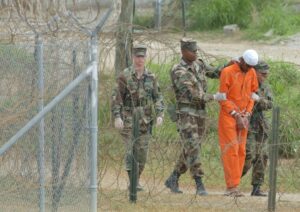
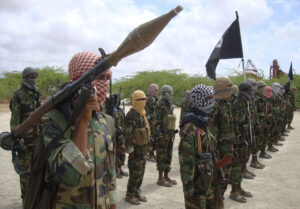
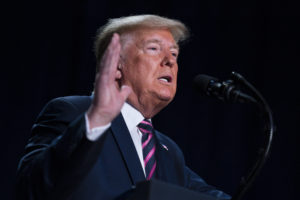

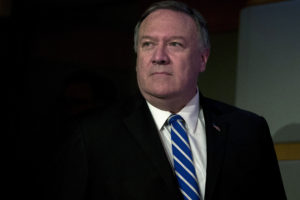
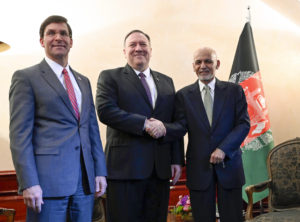
You need to be a supporter to comment.
There are currently no responses to this article.
Be the first to respond.